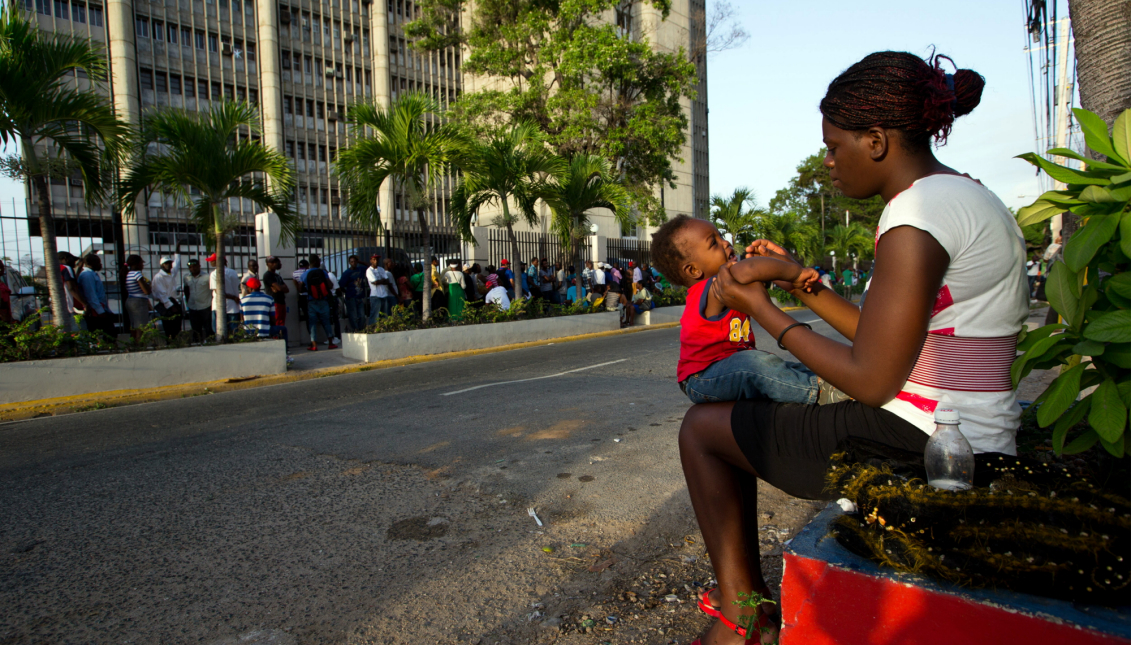
The Dominican Republic, Charleston and a changing editorial
MÁS EN ESTA SECCIÓN
For the first time, AL DÍA's online editorial is going to diverge quite radically from its print editorial. The first part — focused on the Dominican Republic's reprehensible roll-out of "La Sentencia" — remains the same. It's the second part that changed. Why? Because last night, after our print edition was already being placed in honor boxes across Philadelphia, the mass shooting of nine members of Mother Emanuel AME Church in Charleston, S.C., took place. Today, amid the sorrow and anger, African Americans have challenged all of us to stop denying that race was a factor. So we ask ourselves whether our own nation is effecting, not a civil genocide as Haitian President Michel Martelly' has described "La Sentencia," but an actual genocide.
The unchanged part of the editorial:
The United Nations has denounced it.
Thousands of Dominicans in New York City have protested against it.
Dominican writers Junot Diaz and Julia Alvarez penned a New York Times editorial decrying it.
Latin American Nobel Laureate Mario Vargas Llosa called it “directly inspired by Hitler’s famous laws of the ‘30s handed down by German Nazi judeges to strip German citizenship from Jews who had for many years (many centuries) been resident in that country and were a constitutive part of its society.”
What is the “it” in all of the above? The Dominican Republic on Thursday begins enacting an immigration policy of repatriating to Haiti Dominicans whose citizenship has been revoked by retroactively stripping jus soli rights all the way back to 1929 — but only if they are descendants of Haitians and presumed immigrants. It is a bold-faced bit of constitutionally sanctioned racism — from a country that still hasn’t paid full restitution for the massacre of Haitians it perpetrated in 1937. (Google the Parsley or Perejil massacre.)
People in the Dominican Republic haven’t reacted well to the international criticism. They burned Vargas Llosa’s books in the streets and declared him persona non grata. They’ve invoked complex immigration challenges as justification, and called Haiti “a failed state.” They’ve reminded everyone that they are a sovereign nation with the right to do whatever the hell they please — and what pleases them at the moment is to render certain people stateless.
To become, in our view, something much worse than a failed state: A racist state. Sovereign, of course, but a state whose policies and institutionalized racism should make us reconsider any foreign aid. According to the Congressional Research Service, “the United States is one of the largest bilateral donors to the Dominican Republic ... For FY2015, the Obama Administration requested at least $25.7 million for the Dominican Republic and $56.5 million for the Caribbean Basin Security Initiative program.” That aid money should now be redirected in total to Haiti instead, in view of that country’s having to accommodate Dominican citizens made stateless because they are Black and of Haitian descent
Further, as we did with South Africa, citizens of the U.S. should start exerting pressure to divest from the Dominican Republic. Let’s start demanding that retirement funds, mutual funds, and investment institutions across the U.S. sell off the stocks of companies that do business in the Dominican Republic.
The Dominican Republic is one of the main recipients of Foreign Direct Investment in the Caribbean, and its tourism sector is one of the largest recipients. The United States is its largest investor (followed by Canada and Spain). Not only can we exert pressure on companies investing in tourism-centered properties in the Dominican Republic, we can redirect our own tourism dollars to places less proud to officially sanction racism.
A divestment movement works economically, of course, but also exerts additional pressure by increasing public visibility about the extent and nature of the injustice being perpetrated in the Dominican Republic.

Here is where the online and print versions of this editorial diverge:
But that hard look we're directing at the Dominican Republic needs to be turned inward, at our own tenacious, systemically expressed racism, as well. Dylann Storm Roof's murderous shooting spree last night at the African Methodist Episcopal church in Charleston carried echoes of the 1963 deaths of four young Black girls killed when a bomb was detonated at the 16th Street Baptist Church in Birmingham, Alabama — an era of overtly expressed and readily visible racism that non-Black Americans largely believed we'd left far behind.
Even with the visibility garnered recenty by the shooting deaths of Trayvon Martin, Michael Brown, Tamir Rice and Walter Scott. Even with video evidence of the police brutalization of Eric Garner and Freddie Gray before their deaths. Even with statistics that show that homicide rate of Black women is 7.5 per 100,000 for African-American girls and young women ages 15-24 and 7.4 for African-American women ages 25-44 — which puts it on par with the femicide rate of Honduras (the murder capital of the world). Even with all that and more, too many of us have brushed aside the idea that there is a war being waged against our Black fellow citizens; a systemic racism that — as the U.N. legally defines genocide — kills members of the group; causes serious bodily or mental harm to members of the group or deliberately inflicts on the group conditions of life calculated to bring about its physical destruction in whole or in part.
Immediately after the news of the killing of nine people at the Mother Emanuel AME Church, people took to social media to express anger at another horrific example of the violence done to Black bodies specifically. Others took to the same social media to insist — like the Dominicans in denial while confronting international criticism — that gun availability, or anti-religious sentiment, or bullying at school, or something else would prove to be at the heart of tragedy ... anything but racism and the infrastructure that sustains it.
As we are writing this, much is being made of the Facebook photo of Roof wearing a jacket sporting the flag of South Africa under apartheid and one of the 1968 flag of Rhodesia (now Zimbabwe), as well as of the confederate flag on his license plate in another photo. The narrative is already leading to the (relative) comfort zone of an individually expressed rather than structural racism. But how to explain the confederate flag still flying at full mast at the South Carolina statehouse the day after the mass shooting of African Americans ... by a white man ... at a church with historic ties to hard-fought civil rights and abolition struggles? Or that South Carolina governor Nikki Haley defends flying that emblem of racism at the statehouse any day of the year?
It is time to think about how we want to stand — and for what — in domestic policy as well as international. And then, let’s stand against racism and beyond the denial of it.
Updated at 7 p.m.:
According to the Grio, the victims of the mass shooting have been identified. Latino custom is to name our beloved dead at every gathering, adding the word ¡presente! (present) to indicate that their memory will ever be with us. Today, we list the names of those we lost at Mother Emanuel AME Church:
Sharonda Coleman-Singleton, ¡presente!
Reverend Clementa Pinckney, ¡presente!
Cynthia Hurd, ¡presente!
Tywanza Sanders, ¡presente!
Myra Thompson, ¡presente!
Ethel Lance, ¡presente!
Rev. Daniel L. Simmons, ¡presente!
Susie Jackson, ¡presente!
DePayne Doctor, ¡presente!






DEJE UN COMENTARIO:
¡Únete a la discusión! Deja un comentario.